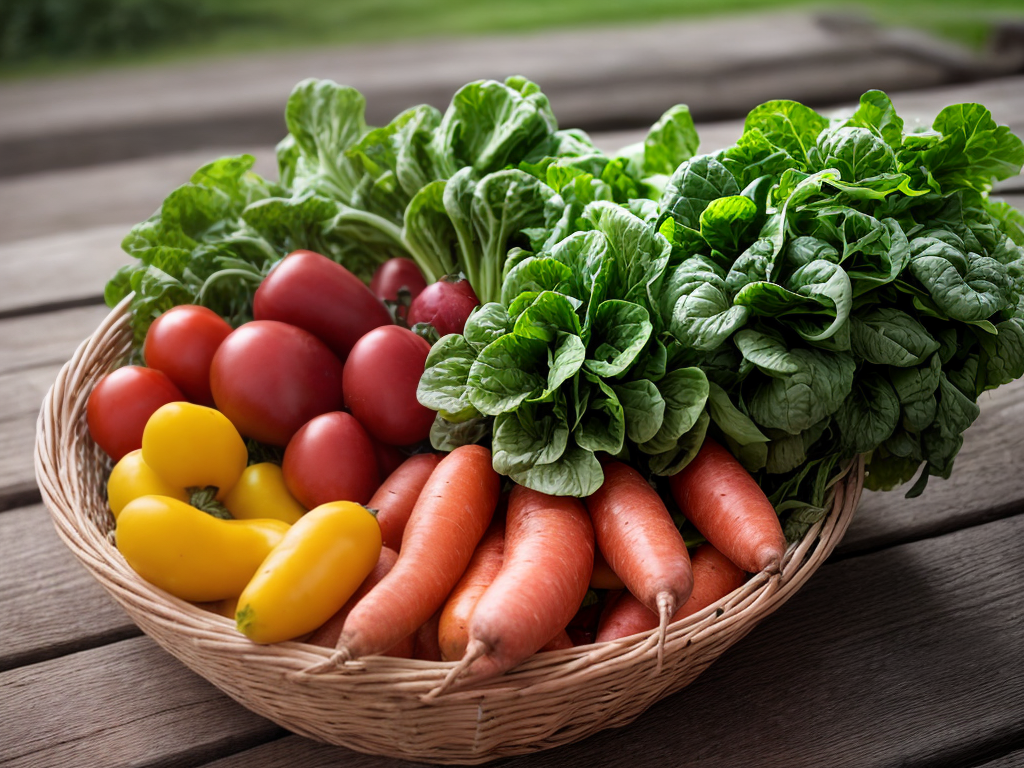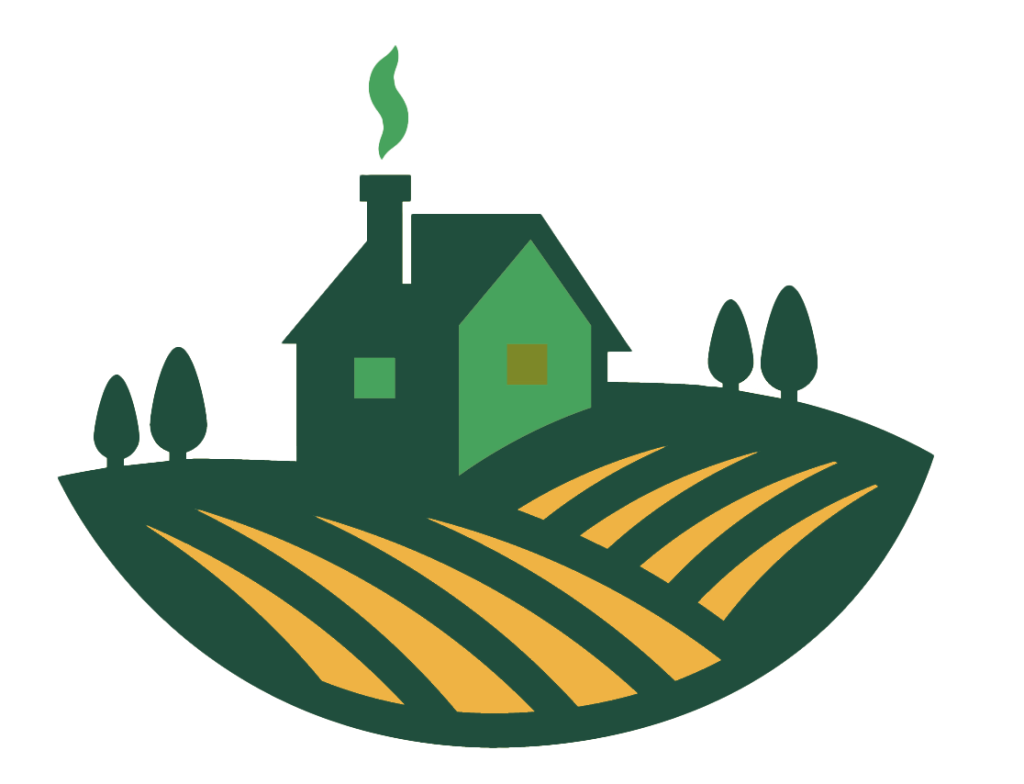
Have you ever wondered how to properly harvest organic vegetables? Well, look no further! In this article, I will guide you through the essential steps to take when harvesting your homegrown veggies. From choosing the right time to assessing plant maturity, to properly handling and cleaning your produce, I’ve got you covered. We’ll also explore saving seeds, composting organic waste, and reflecting on your harvest for future seasons. Get ready to enjoy the fruits (and vegetables) of your labor!
Choosing the Right Time to Harvest
I always rely on the vegetables’ appearance and texture to determine the right time to harvest them from my organic garden. Assessing ripeness is crucial in ensuring that the vegetables are at their peak flavor and nutritional value. For example, when harvesting tomatoes, I look for a vibrant red color and a slightly firm texture. If they are too soft or have blemishes, it may indicate overripeness or spoilage. Similarly, for leafy greens like lettuce or spinach, I check for crispness and a fresh green color. Once I have determined that the vegetables are ready to be harvested, I handle them with care during post-harvest handling. This involves gently removing them from the plant and storing them properly to maintain their freshness and quality.
Assessing Plant Maturity
When it comes to harvesting organic vegetables, it is crucial to wait until they are at their peak of maturity. This ensures that they are at their most flavorful and nutrient-dense state. To assess plant maturity, I check for ripeness indicators such as color, texture, and size.
Harvesting at Peak
To ensure optimal flavor and nutrient content, it is important to accurately determine the maturity of organic vegetables before harvesting. Here are four steps to help you harvest your vegetables at their peak:
-
Visual cues: Pay attention to the appearance of the vegetables. Look for vibrant colors, firm texture, and a fully developed size. Avoid harvesting vegetables that are still small or have signs of immaturity.
-
Tactile assessment: Gently touch the vegetables to assess their firmness. Mature vegetables should feel firm and not too soft or mushy.
-
Taste test: Sample a small portion of the vegetable to evaluate its flavor. Vegetables harvested at the peak of maturity will have a more intense and delicious taste.
-
Follow variety-specific guidelines: Different vegetables have different maturity indicators. Research the specific variety you are growing to determine the optimal time for harvesting.
Checking for Ripeness
Assessing plant maturity involves using a participle preposition, such as ‘By visually inspecting the vegetables for ripeness.’ This step is crucial in ensuring that the vegetables are harvested at the right time for optimal flavor and quality. When conducting a ripeness assessment, it is important to consider the specific requirements for organic certification. Organic vegetables must meet certain criteria, such as being free from synthetic pesticides and fertilizers. To determine ripeness, look for visual cues such as color, size, and texture. For example, tomatoes should be fully red and slightly firm to the touch. Additionally, taste-testing can also be helpful in determining if a vegetable is ripe. By carefully assessing the maturity of the plants, you can ensure that your organic vegetables are harvested at their peak and meet the standards for organic certification.
Gathering the Necessary Tools
I gather the necessary tools for harvesting organic vegetables. Here are the four essential items I need:
- Gardening gloves: To protect my hands from dirt, thorns, and potential irritants while working in the garden.
- Pruning shears: These sharp handheld tools allow me to carefully cut and harvest vegetables without damaging the plants.
- A garden knife: This versatile tool is perfect for cutting through tough stems and roots, and it also helps in gathering leafy greens.
- A harvesting basket or bag: To collect and transport the freshly picked vegetables, ensuring they stay in good condition until they reach the kitchen.
Before I start harvesting, I make sure to choose appropriate clothing, such as long sleeves and pants, to protect my skin from scratches and sunburn. Additionally, I prepare the harvesting area by removing any weeds or debris that might interfere with the process. These simple steps help me gather my tools efficiently and ensure a successful harvest of my organic vegetables.
Handling Vegetables With Care
After gathering the necessary tools, I carefully handle the harvested organic vegetables to ensure their freshness and quality. Handling vegetables gently is crucial to prevent bruising and damage. By taking a few simple steps, you can preserve the flavor and texture of your vegetables.
First, it is important to wash your hands thoroughly before handling the vegetables. This helps to prevent any potential contamination. Next, use a sharp knife to cut the vegetables, ensuring clean and precise cuts. Avoid squeezing or pressing the vegetables too hard, as this can cause bruising.
When storing the vegetables, use breathable containers or bags to allow for proper air circulation. Avoid overcrowding the containers, as this can lead to damage. Keep the vegetables in a cool, dry place to maintain their freshness.
Properly Cleaning Harvested Produce
When it comes to properly cleaning harvested produce, there are a few key points to keep in mind. First, it is essential to thoroughly wash organic vegetables to remove any dirt and debris that may be present. This helps to ensure that the produce is clean and safe to consume.
Washing Organic Vegetables
To properly clean harvested organic vegetables, begin by rinsing them under cold running water. This step is crucial for removing any dirt, debris, or contaminants that may be present on the surface of the vegetables. Here are four essential washing techniques to ensure the preservation of your organic produce:
- Gently rub the vegetables with your hands or a soft brush to remove any stubborn dirt or residue.
- For leafy greens, separate the leaves and soak them in a bowl of cold water for a few minutes to allow any hidden dirt or insects to float to the surface.
- For root vegetables, like carrots or potatoes, use a vegetable scrubber to thoroughly clean the skin.
- After washing, pat the vegetables dry with a clean towel or use a salad spinner to remove excess moisture.
Removing Dirt and Debris
I start by rinsing the harvested organic vegetables under cold running water to remove any dirt, debris, or contaminants. This step is crucial in ensuring that the produce is clean and safe to consume. By washing the vegetables, I am effectively removing any external particles that may have accumulated during the harvesting process. Not only does this help in removing dirt and debris, but it also helps in getting rid of any potential pests that may have found their way onto the produce. Furthermore, proper cleaning of harvested vegetables is an essential step in preventing post-harvest diseases. By removing any contaminants, we can reduce the risk of bacterial or fungal growth and prolong the shelf life of the organic vegetables.
Storing Vegetables for Longevity
After harvesting organic vegetables, I always make sure to store them in a cool and dark place for optimal longevity. Here are some storing methods and preserving techniques I use to keep my vegetables fresh for longer:
-
Temperature control: It’s important to store vegetables at the right temperature to slow down their natural ripening process. A cool temperature, around 32-40°F (0-4°C), helps to extend their shelf life.
-
Moisture regulation: Vegetables can easily become wilted if exposed to excessive moisture or dryness. To maintain their freshness, store them in a slightly humid environment, using a damp cloth or paper towel to cover leafy greens.
-
Separation: Some vegetables release ethylene gas, which can speed up the ripening process of others. To prevent premature spoilage, store ethylene-producing vegetables like tomatoes and peppers separately from those that are ethylene-sensitive, such as leafy greens and root vegetables.
-
Darkness and ventilation: Keep vegetables in a dark place to protect them from light exposure, which can cause them to lose their color and nutrients. Additionally, ensure proper ventilation to prevent the buildup of excess moisture that can lead to rotting.
Maximizing Flavor and Nutrient Content
When it comes to maximizing the flavor and nutrient content of organic vegetables, two key factors to consider are soil health and harvesting techniques. Ensuring that the soil is rich in nutrients and properly balanced can greatly enhance the taste and nutritional value of the vegetables. Additionally, harvesting the vegetables at the peak of freshness and using proper techniques to minimize damage can help preserve their flavor and nutrient content.
Soil Health and Nutrients
Maximizing flavor and nutrient content of organic vegetables relies on maintaining optimal soil health and nutrient levels. Here are four essential steps to achieve this:
-
Soil testing: Regularly test the soil to assess its nutrient levels and pH balance. This will help you understand what amendments or fertilizers are needed to improve soil fertility.
-
Crop rotation: Rotate your crops each season to prevent the depletion of specific nutrients and minimize the risk of diseases and pests. Different plants have varying nutrient requirements, and rotating crops ensures balanced nutrient uptake.
-
Organic matter addition: Incorporate organic matter, such as compost or well-rotted manure, into the soil. This improves soil structure, enhances nutrient retention, and encourages beneficial microbial activity.
-
Mulching: Apply a layer of organic mulch around plants to conserve moisture, suppress weed growth, and gradually release nutrients into the soil.
Harvesting Techniques for Freshness
To ensure the freshness and maximize the flavor and nutrient content of my organic vegetables, I employ effective harvesting techniques. By following these freshness techniques and practicing proper post-harvest care, I can ensure that my vegetables retain their optimal taste and nutritional value. Here are some key methods I use:
-
Harvesting at the right time: I carefully monitor the maturity of each vegetable and pick them when they are at their peak ripeness.
-
Handling with care: I gently remove the vegetables from the plant, taking care not to damage them or bruise their delicate parts.
-
Quick cooling and storage: After harvesting, I promptly cool the vegetables to preserve their freshness and store them in a cool and dark place to maintain their flavor and nutrient content.
Saving Seeds for Future Planting
I save seeds from my organic vegetables for future planting. It’s a practice that allows me to continue growing my own food, while also preserving the genetic diversity of the plants I cultivate. Here are four steps I follow to ensure successful seed preservation:
-
Harvesting: I wait until the vegetables are fully mature and dry before collecting the seeds. This ensures that the seeds are viable and ready for storage.
-
Cleaning: After harvesting, I remove any debris or plant matter from the seeds. This prevents the growth of mold or other pathogens during storage.
-
Drying: I spread the cleaned seeds in a single layer on a tray or screen and place them in a well-ventilated area. This allows the seeds to dry completely, reducing the risk of rot or spoilage.
-
Storage: Once the seeds are dry, I transfer them to airtight containers, such as glass jars or plastic bags, and store them in a cool, dry place. This helps to maintain their viability for future planting.
Utilizing Trimmed Plant Material
After completing the process of seed preservation, the next step is to utilize the trimmed plant material in a resourceful manner. Instead of throwing away the plant trimmings, they can be used in various ways to reduce waste and enhance the garden. One option is to create compost by adding the plant trimmings to a compost bin or pile. This will not only reduce the amount of waste going to the landfill but also provide nutrient-rich compost for future use. Another way to utilize plant trimmings is by making natural fertilizers or mulch. By chopping or shredding the trimmings, they can be spread around the garden to enrich the soil and suppress weed growth. Lastly, plant trimmings can also be used for making herbal infusions or homemade pesticides. By utilizing plant trimmings in these ways, we can maximize the benefits of organic gardening while minimizing waste.
Composting Organic Waste
After utilizing the trimmed plant material, the next step I take when harvesting organic vegetables is composting the organic waste. Composting is a vital part of sustainable gardening as it helps reduce waste and enriches the soil. Here are four key steps in the composting process:
-
Gather the organic waste: Collect all plant material, such as leaves, stems, and roots, as well as kitchen scraps like fruit peels and coffee grounds. Avoid using meat, dairy, or oily items.
-
Create a compost pile: Find a suitable location, preferably in a shaded area, and layer the organic waste with dry materials like straw or wood chips. This will help maintain the right balance of carbon and nitrogen.
-
Turn the compost: Regularly mix the pile to aerate it and speed up decomposition. This can be done with a pitchfork or a compost turner.
-
Monitor and use the compost: Keep the compost pile moist but not overly wet. Within a few months, you’ll have nutrient-rich compost ready to enhance your vegetable garden.
Composting benefits include reducing landfill waste, improving soil structure, and promoting healthy plant growth. By following these steps, you can effectively manage organic waste and create a sustainable garden ecosystem.
Reflecting and Planning for Next Season
In evaluating the success of my organic vegetable harvest, reflection and planning for the next season is essential to ensure continuous improvement and future yields. Reflecting on successes allows me to identify what worked well and should be repeated in the coming season. It gives me a sense of accomplishment and motivation to keep going. On the other hand, evaluating challenges helps me pinpoint areas that need improvement. Whether it was pest control, soil preparation, or crop rotation, understanding the challenges I faced enables me to come up with strategies to overcome them in the future. By reflecting on successes and evaluating challenges, I can create a plan that maximizes productivity and minimizes potential setbacks for the next growing season.


